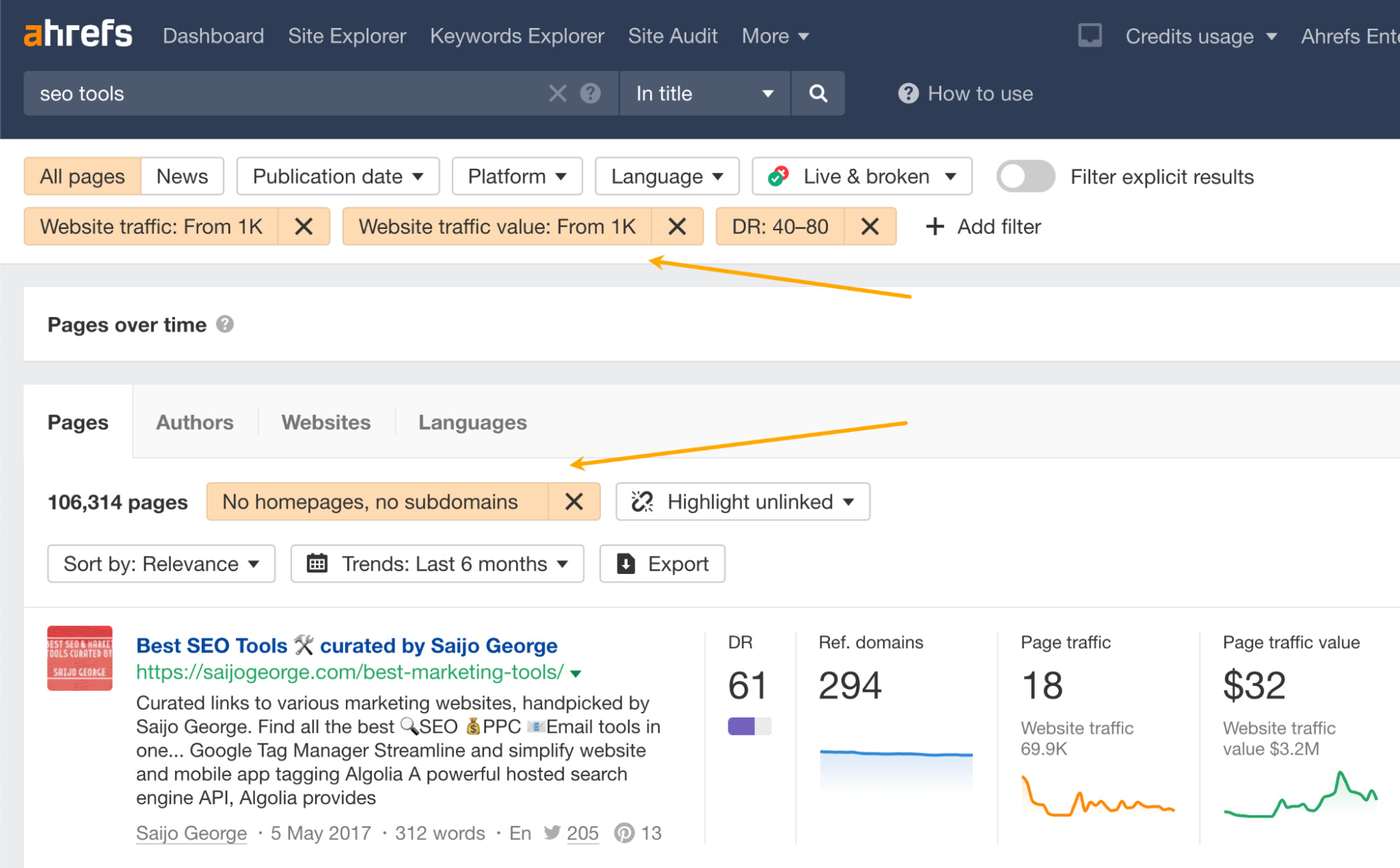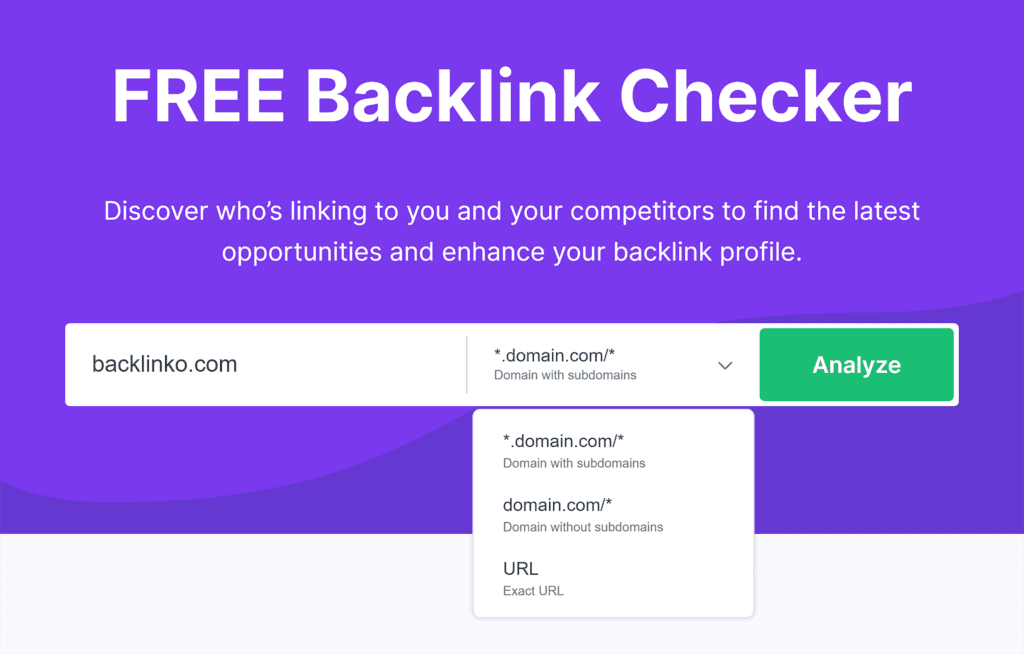Link Prospecting: How to Find Quality Backlinks for Your Website
Jenny is an award-winning SEO consultant who specializes in using branded PR to maximize SEO results for clients by building E-A-T and has an extensive background in niche affiliate and technical SEO.
Article Performance
Data from Ahrefs
Linking websites
Get SEO metrics of any website or URL.
The number of websites linking to this post.
This post’s estimated monthly organic search traffic.
Get the week’s best marketing content
We all know that link building is a crucial part of any SEO campaign. But to be successful, it is all about quality over quantity.
This is where the process of link prospecting comes in. Finding and evaluating the quality of a potential site is essential for link building success. In this article, we will look at how to do link prospecting in five easy steps.
What is link prospecting?
Link prospecting is the process of finding and evaluating potential sites to acquire links from.
This means identifying potential sites depending on the type of link building strategy you are using, checking the quality of that site, and finding the appropriate people to reach out to as part of your outreach campaign.
Link prospecting is the essential first step to building a solid link strategy. Without it, every other aspect will likely fall to pieces.
Why is link prospecting important for SEO?
Link prospecting helps you identify sites to acquire links from and, more importantly, helps you identify sites to avoid.
With Google making it a priority to “neutralize the impact of unnatural links on search results,” the last thing you want is to intentionally attract any kind of link spam to your site.

Step 3. Find relevant and high-quality link prospects
Now that you have a clear link building strategy and evaluation criteria, it’s time to start finding relevant and high-quality link prospects.
You can use several different methods to do this, and we will look at my four favorite ones in more detail.
Finding prospects through competitor analysis
Using competitor analysis is one of the quickest ways to find quality link prospects.
Why? Assuming your competitors have already evaluated the quality of these sites, the qualification process is likely to be much faster. And since those sites have already linked to your competitors, there is a probability that they will link to yours too.
Are your competitors mainly guest blogging? Using niche edits or HARO link building? These insights can help you replicate your competitors’ link building efforts and even the playing field on the search engine results pages (SERPs).
You can check out your competitors’ links in a couple of different ways.
You can start by identifying your competitors with the Organic competitors report in Site Explorer.

Next, select your most important competitors and use the “Open in Link Intersect” option.

This will give you all of the referring domains your competitors have and show how many different competitors have links from those sites.

If you want to analyze the types of links your competitors are acquiring and which kind of content is being linked to, you can put a competitor’s URL into Site Explorer and view the Best by links report.
Not only can you see the content driving links to the site, but you can also see which websites are linking to those pages. This works great for building skyscrapers and linkable asset campaigns, especially if you are figuring out what type of content to build the campaign around.
Plus, you can filter the results to meet your evaluation criteria.

Another way to use competitor analysis (focusing on the Skyscraper Technique as an example) is to put the keyword for your intended skyscraper post into Ahrefs’ Keywords Explorer.
Using the SERP overview, you can see competing articles on the SERP, as well as the backlinks for each of those articles.

By clicking on the number of backlinks for a result, you will be taken to the Backlinks report for that page. You can filter the results to meet your evaluation criteria and simply export the list.

Further reading
- How to Perform a Competitor Link Analysis in 3 Steps
- How to Find Your Competitors’ Backlinks (And Get Them for Yourself)
- Competitor Analysis: Understanding How a Page Got Backlinks – 1.2. Link Building Course
Finding prospects with Google and search operators
One of the easiest ways to find link prospects is to use Google with the help of some advanced search operators. Use terms that are relevant to your business or niche and add modifiers like “guest post” or “write for us” to narrow down the results.
Plus, if you use Ahrefs’ SEO Toolbar, you can see important site metrics like DR right in the search results, helping you narrow down prospects even faster.
There are many search operators you can use to help you build a comprehensive prospect list. As an example, let’s look at some search operators you can use if you are finding prospects for guest blogging:
- “Contribute”
- “Guest blogging spot”
- “Guest contributor”
- inurl:guest*author
- inurl:guest*blogger
- “guest blogger” + inanchor:contact
- “guest article” + inanchor:contact
Here’s an example of one of these in use:

Using appropriate search operators, you can build a list of prospects into a spreadsheet. You can even automate the process with this free tool from LinkPitch.

Finding prospects with Content Explorer
Another great way of finding link prospects is by using Ahrefs’ Content Explorer. It allows you to find content on relevant topics.
This particular method for finding link prospects is great because it works for a number of different link building tactics.
First, using the “Pages” tab can help you find relevant content for potential niche edits. Also, if you visit the page and use Ahrefs’ SEO Toolbar, you can easily find invalid links for broken link building.
Moreover, with the “Authors” tab, you can find relevant authors and influencers to reach out to when starting a digital PR campaign.

The best thing about using Content Explorer for link prospecting is that you can use advanced filters to ensure prospects meet your evaluation criteria. You can choose to show pages or websites within a certain DR range, with a specific website traffic or traffic value.

Plus, once your filters are applied, you can simply export the results into a spreadsheet.
Finding prospects with Web Explorer
Ahrefs’ new Web Explorer tool is a game changer for link building and is perfect for link prospecting.
The tool allows you to do a number of different things that make finding link prospects quick and easy. For example, you can find pages that are getting backlinks with specific keywords in the anchor text or topic-specific blogs that accept guest posts.
My personal favorite (as someone who does a lot of digital PR) is the fact you can find pages with unlinked brand mentions. You can simply export the results and reach out to a site, requesting it to add a link because it’s already mentioned your site!

You can further expand your list of prospects by finding their “lookalikes.” See this video tutorial for more details:

However, when you visit the site, you can see it is poorly designed with a mass of poor-quality content. And for the most part, there are more display ads on the screen than actual content.

This is a prime example of why it pays to check out each site individually. Sites that don’t cut the mustard need to be removed from your prospect list.
Step 5. Find contacts for your prospects
The whole point of prospecting is to find sites to approach via outreach and acquire links from them. But you need contact details as part of your prospecting to reach out to them.
This will be the last step in narrowing down your list of prospects. Any potential sites you can’t find valid contact details for can be struck off your list.
The easiest way to do this is to use an email lookup tool like Hunter. This tool allows you to input any domain, bringing up all associated email addresses and information about the company.

Then, once you have found relevant emails for your prospects, plug them into a tool like Pitchbox to start your outreach.
Further reading
- Effective Email Outreach: 5 Lessons From 111 Emails
- Blogger Outreach: How to Do It and Scale It Without Feeling Like a Jerk
- I Just Deleted Your Outreach Email Without Reading. And NO, I Don’t Feel Sorry.
Final thoughts
Link prospecting is an essential part of SEO, and it’s important to take the time to do your research and evaluate link prospects properly.
Remember to always check for quality and trustworthiness. Google penalizes sites with low-quality backlinks, so make sure you don’t overlook any potential signs of spammy sites.
Once you have identified a list of high-quality sites relevant to your niche or target audience, you can start the outreach process and begin acquiring some awesome links for your site.
If you want to learn more, you can check out our videos on link prospecting in our Advanced Link Building course.
Got questions? Ping me on Twitter.

